Diazepam-induced loss of inhibitory synapses mediated by PLCδ/ Ca2+/calcineurin signalling downstream of GABAA receptors
- PMID: 29904150
- PMCID: PMC6232101
- DOI: 10.1038/s41380-018-0100-y
Diazepam-induced loss of inhibitory synapses mediated by PLCδ/ Ca2+/calcineurin signalling downstream of GABAA receptors
Abstract
Benzodiazepines facilitate the inhibitory actions of GABA by binding to γ-aminobutyric acid type A receptors (GABAARs), GABA-gated chloride/bicarbonate channels, which are the key mediators of transmission at inhibitory synapses in the brain. This activity underpins potent anxiolytic, anticonvulsant and hypnotic effects of benzodiazepines in patients. However, extended benzodiazepine treatments lead to development of tolerance, a process which, despite its important therapeutic implications, remains poorly characterised. Here we report that prolonged exposure to diazepam, the most widely used benzodiazepine in clinic, leads to a gradual disruption of neuronal inhibitory GABAergic synapses. The loss of synapses and the preceding, time- and dose-dependent decrease in surface levels of GABAARs, mediated by dynamin-dependent internalisation, were blocked by Ro 15-1788, a competitive benzodiazepine antagonist, and bicuculline, a competitive GABA antagonist, indicating that prolonged enhancement of GABAAR activity by diazepam is integral to the underlying molecular mechanism. Characterisation of this mechanism has revealed a metabotropic-type signalling downstream of GABAARs, involving mobilisation of Ca2+ from the intracellular stores and activation of the Ca2+/calmodulin-dependent phosphatase calcineurin, which, in turn, dephosphorylates GABAARs and promotes their endocytosis, leading to disassembly of inhibitory synapses. Furthermore, functional coupling between GABAARs and Ca2+ stores was sensitive to phospholipase C (PLC) inhibition by U73122, and regulated by PLCδ, a PLC isoform found in direct association with GABAARs. Thus, a PLCδ/Ca2+/calcineurin signalling cascade converts the initial enhancement of GABAARs by benzodiazepines to a long-term downregulation of GABAergic synapses, this potentially underpinning the development of pharmacological and behavioural tolerance to these widely prescribed drugs.
Conflict of interest statement
The authors declare that they have no conflict of interest.
Figures
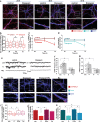
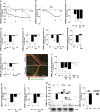
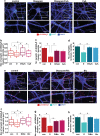

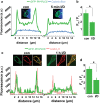
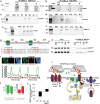
Similar articles
-
Activation of calcineurin underlies altered trafficking of α2 subunit containing GABAA receptors during prolonged epileptiform activity.Neuropharmacology. 2015 Jan;88:82-90. doi: 10.1016/j.neuropharm.2014.09.014. Epub 2014 Sep 22. Neuropharmacology. 2015. PMID: 25245802 Free PMC article.
-
Selective inhibition of extra-synaptic α5-GABAA receptors by S44819, a new therapeutic agent.Neuropharmacology. 2017 Oct;125:353-364. doi: 10.1016/j.neuropharm.2017.08.012. Epub 2017 Aug 12. Neuropharmacology. 2017. PMID: 28807671
-
Tolerance to the sedative and anxiolytic effects of diazepam is associated with different alterations of GABAA receptors in rat cerebral cortex.Neuroscience. 2015 Dec 3;310:152-62. doi: 10.1016/j.neuroscience.2015.09.038. Epub 2015 Sep 29. Neuroscience. 2015. PMID: 26391922
-
Phosphorylation of GABAA receptors influences receptor trafficking and neurosteroid actions.Psychopharmacology (Berl). 2014 Sep;231(17):3453-65. doi: 10.1007/s00213-014-3617-z. Epub 2014 May 22. Psychopharmacology (Berl). 2014. PMID: 24847959 Free PMC article. Review.
-
Acute cellular alterations in the hippocampus after status epilepticus.Epilepsia. 1999;40 Suppl 1:S9-20; discussion S21-2. doi: 10.1111/j.1528-1157.1999.tb00873.x. Epilepsia. 1999. PMID: 10421557 Review.
Cited by
-
Regulation of Inhibitory Signaling at the Receptor and Cellular Level; Advances in Our Understanding of GABAergic Neurotransmission and the Mechanisms by Which It Is Disrupted in Epilepsy.Front Synaptic Neurosci. 2022 Jun 15;14:914374. doi: 10.3389/fnsyn.2022.914374. eCollection 2022. Front Synaptic Neurosci. 2022. PMID: 35874848 Free PMC article. Review.
-
Anxiety and hippocampal neuronal activity: Relationship and potential mechanisms.Cogn Affect Behav Neurosci. 2022 Jun;22(3):431-449. doi: 10.3758/s13415-021-00973-y. Epub 2021 Dec 6. Cogn Affect Behav Neurosci. 2022. PMID: 34873665 Review.
-
Regulation of GABAA Receptors Induced by the Activation of L-Type Voltage-Gated Calcium Channels.Membranes (Basel). 2021 Jun 29;11(7):486. doi: 10.3390/membranes11070486. Membranes (Basel). 2021. PMID: 34209589 Free PMC article. Review.
-
Calcineurin in development and disease.Genes Dis. 2021 Mar 15;9(4):915-927. doi: 10.1016/j.gendis.2021.03.002. eCollection 2022 Jul. Genes Dis. 2021. PMID: 35685477 Free PMC article. Review.
-
Cannabigerolic acid, a major biosynthetic precursor molecule in cannabis, exhibits divergent effects on seizures in mouse models of epilepsy.Br J Pharmacol. 2021 Dec;178(24):4826-4841. doi: 10.1111/bph.15661. Epub 2021 Sep 30. Br J Pharmacol. 2021. PMID: 34384142 Free PMC article.
References
Publication types
MeSH terms
Substances
Grants and funding
LinkOut - more resources
Full Text Sources
Other Literature Sources
Research Materials
Miscellaneous

